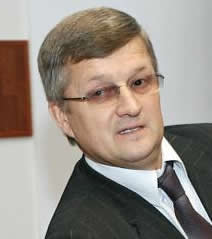Reflecting continued and rapid growth year over year, Aero India is hosting over 700 exhibitors this year, many of them foreign. International pavilions at the show highlight the growing interest from aerospace and defense industries from the US, Israel, Russia, France, the UK and Germany, as well as from many smaller countries, seeking to become second and third level suppliers and join the big party. 78 countries have sent official delegation, representing a significant increase in the international footprint of the airshow, reflecting the growing role of the Indian market in the international aerospace industry.

The reasons for that are obvious. In contrast to other defense markets maintained stagnant at best, New Delhi has increased its defense spending by 13% from last year, spending 1.93 trillion rupees ($36 billion) for defense in the financial year through March 2013. Almost half of this budget is allocated to buying more weapons. Russia, still India’s biggest weapons supplier, is making up to 70% of the equipment used by Indian armed forces, but as New Delhi diversifies its sources of supplies, the US, France, Israel and Italy the UK are grabbing growing share of the pie. “Defense sales [between India and the U.S.], which have risen from just over $200 million in 2001, have increased to over $14 billion today,” said Ron Somers, president of the U.S.-India Business Council, in a statement. “This remarkable growth in defense sales translated to thousands of high-skill jobs being created both in India and the U.S., making it a win-win for both countries.”

As western suppliers gain more business, the Russians are suffering. Last year Russian arms exporters suffered two painful losses at Indian tenders. Russia did not win the contract to supply 22 helicopters to India, which preferred the US AH-64D Apache to Russia’s Mi-28N. During the Medium Multi-Role Combat Aircraft (MMRCA) tender announced by the Indian Air Force to replace the aging MiG-21s, the Russian MiG-35 did not even make it to the finals, where the Eurofighter Typhoon twin-engine multirole fighter lost a contract worth at least $10 billion to France’s Dassault Rafale.
Nevertheless, Russia remains a key supplier of weaponry to India with good prospects for future military-technical cooperation. Last year alone, Russia concluded more than $3.5 billion’s worth of new arms export agreements with India, including the purchase of 71 Mi-17B-5 Hip helicopters and the delivery of assembly kits for 42 Su-30MKI Flanker fighters, while the current portfolio of Indian contracts is worth more than $7 billion. Future procurement of the planned stealth, fifth generation FGFA will also contribute to the Russian future portfolio with India. As for near future prospects, Russia would like to take another pass on selling the Be-200 amphibious plane, and hopes to win the Indian tender for 197 scout and surveillance helicopters with its new, lightweight Ka-226T model.
Deputy General Director of Russia’s state arms exporter Rosoboronexport, Viktor Komardin, told RIA Novosti on an interview yesterday that Russia must be ready to battle with foreign competitors over its share of the Indian arms market using advanced forms of military-technical cooperation. “We have abandoned the practice of simple selling, seeking more of joint programs to produce defense equipment, including for third parties. This gives us a chance to keep slightly ahead of our key rivals,” he said. An example of such cooperation is the development of the Russian-Indian Multi-Role Military Transport Aircraft (MTA), which is expected to fly for the first time in 2017 and enter production both in Russia and India in 2019. “We expect Rosoboronexport to annually ship at least $3 billion’s worth of weapons and material under the contracts that have already been signed with the Indian state clients,” Komardin said. An agreement to set up a joint venture to develop and produce the plane was signed between India’s Hindustan Aeronautics (HAL) and Russia’s United Aircraft Corporation (UAC) in New Delhi in September 2010.
According to the official, prospective agreements in the area of military-technical cooperation could be even more lucrative for Russia. “We are talking over plans to upgrade the country’s fleet of Ka-28 antisubmarine helicopters and Su-30MKIs, and to supply a batch of Mi-17V-5 to the Indian Interior Ministry. There are some other promising projects, too, and not just in aviation,” Komardin said.

















